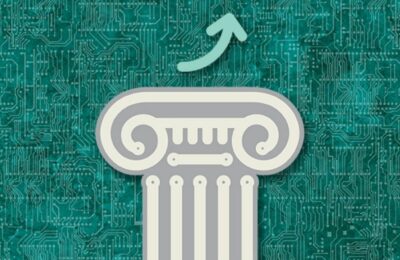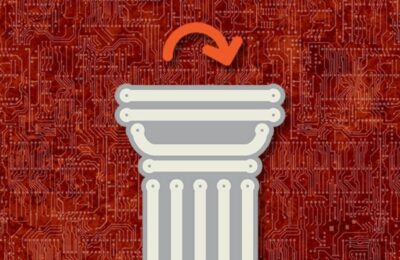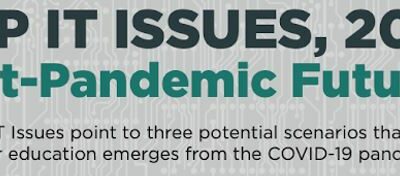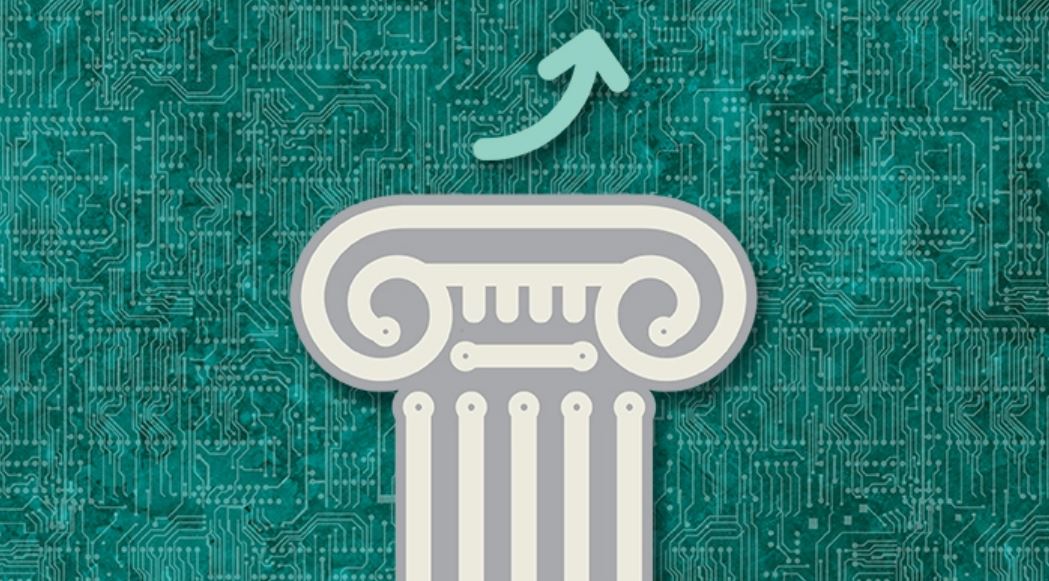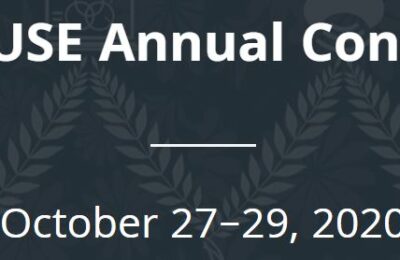EnlightenEd
Data Privacy in Higher Education

This blog post is part of a series discussing critical aspects of the Educause report “Top 10 IT Issues 2020: The Drive to Digital Transformation Begins.”
It’s been a long time since “privacy” just meant putting up a fence to keep nosy neighbors at bay. Today, when people speak of privacy, they’re often talking about data privacy. The reason is simple: more and more of what we do—both online and in the “real world”—can be transformed into data that is collected, analyzed, and sold. And in many cases, all of this happens without our permission.
The Role of Data in Higher Education
Educause listed “privacy” as its number two IT issue for higher ed in 2020 because of the vast amounts of data that higher ed institutions are able to collect from their students. If there’s to be any trust between students and their institution, school’s need to be able to answer basic questions like,
“What data is being collected?”
“Who has access to the data?”
“What measures are in place to keep it secure?”
The answers, unfortunately, aren’t always as clear cut as they should be.
Take the example of “gray data.” Many types of data are already regulated in some form. Laws like the EU’s General Data Protection Regulation (GDPR) and California’s Consumer Protection Act will almost certainly be followed by more rules and regulations surrounding the collection, storage, and sale of data. But in some cases, data still falls into gray areas. For instance, when a student uses their key card to swipe in and out of their dorm, that generates data. If the same key card is used for buying meals, to access the rec and other facilities, or to take attendance in class, then it could be used to track a student’s whereabouts with a frightening degree of accuracy.
It may not be illegal to collect such data, but that doesn’t mean institutions should be cavalier about doing so. As we’ve seen time and time again over the past decade, no organization—including the government and Fortune 500 companies—is immune to breaches of their security systems.
And once data has been compromised, there is no turning back the clock. Students can’t simply be reimbursed for their data once it’s been stolen.
Making Data Privacy an Institutional Priority
Institutions can begin safeguarding their students’ data by making privacy a priority at every level.
The hiring of a chief privacy officer is a good first step. Ideally, it would happen in tandem with the creation of a privacy board, the drafting of a crisis response plan for data, and a review of data storage and classifications. Most importantly, institutions need to be communicating clearly and regularly with students about privacy policies, simplifying opt-out processes, and generally working to sustain their trust.
Colleges and universities around the country are collecting unimaginable amounts of data from their students every year. To gain and keep the trust of their student body, they should begin to view themselves as stewards not just of their students’ educations, but of their data, as well.
More EnlightenEd Entries
EnlightenEd
Increasing Student Retention and Completion on Campuses Around the Country

This blog post is part of a series discussing critical aspects of the Educause report “Top 10 IT Issues 2020: The Drive to Digital Transformation Begins.”
One of the unfortunate realities of higher education is that not everyone who enters the academy leaves with a degree. The percentage of students who drop out and never receive a diploma varies among institutions, but at nearly every college and university in the country, it’s considered a serious problem.
Educause’s report on the top 10 IT issues of 2020 highlights this problem, ranking it as the number six issue in their report. Of course, this report was released before the COVID-19 pandemic moved most higher education online—exacerbating the problem of student retention even further.
Now, you may be wondering why Educause would list student retention and completion as an “IT issue” when it seems to be more about studying, test-taking, and writing papers – the things students actually do to graduate.
The reason is simple: early intervention for students who are struggling is one of the best ways to increase retention and graduation rates. And by using machine learning, institutions can greatly increase their chances of figuring out which students are at risk, intervening early, and keeping them on the path to graduation.
How Data Fuels Early Intervention
Every year, higher ed institutions collect immense amounts of data on both current and prospective students. Courses completed (in both high school and college), courses dropped, grades, test scores, and more are all at the institution’s fingertips. Too often, however, this data goes unused or underutilized.
However, by using machine learning, schools can begin to use all that data to discern patterns and understand the risk profiles of individual students given their course load and past experiences.
For instance, N2N’s Lighthouse Student Success Module creates student profiles based on their data, providing their institution with their risk percentage in different subjects, as well as course recommendations based on the student’s profile, course complexity, and behavioral factors.
Humans and AI Working in Tandem
 Obviously, the final decision will be made by the student in consultation with their academic advisor. But by empowering the advisor with information related to each individual student’s risk factors given a specific course load, Lighthouse helps stop issues with retention before they arise.
Obviously, the final decision will be made by the student in consultation with their academic advisor. But by empowering the advisor with information related to each individual student’s risk factors given a specific course load, Lighthouse helps stop issues with retention before they arise.
For example, take a student who had a tough time with their courses last semester, and is loading up with more high-complexity courses this semester. They’re at an increased risk for burnout, and another bad semester might stop their academic progression altogether. If the advisor has Lighthouse at their disposal, they’ll see all of this clearly in the Risk Module. They’ll also be able to recommend swapping a high-risk course (or two) with one that does a better job balancing the student’s schedule and, critically, gives them the best chance to be back at school next year.
High student retention and graduation rates aren’t just good for students and schools—they’re good for society in general. At N2N, we believe in making sure as many students as possible leave college with a diploma.
If you’re ready to talk about how we can help your institution achieve that goal, contact us today at (888) 651-3309.
More EnlightenEd Entries
EnlightenEd
How Colleges and Universities Can Achieve a Digitally Integrated Campus

This is the fourth in a series of posts discussing critical aspects of the Educause report “Top 10 IT Issues 2020: The Drive to Digital Transformation Begins.”
Last year, Educause released their annual report of the top IT issues facing higher ed. The report was released before the COVID-19 pandemic threw higher education into chaos. However, that doesn’t mean the issues in the report became irrelevant. In fact, many of them became even more important as the year wore on.
Digital integration, the fourth issue on the list, is a prime example. Many higher ed institutions have been operating with a plethora of applications, platforms, and databases on campus—few of which are interoperable or scalable to the necessary degree. This patchwork system may have been holding up for the most part before the pandemic, but the switch to virtual learning has made the need for a truly digitally integrated campus more pressing than ever.
Why the need for digital integration?
Over the course of the past two decades, campus life was revolutionized as more and more information was digitized and processes like choosing classes or checking grades moved online. The side effect of all this was a campus-wide scramble to add apps and systems that accomplished the specific goals of various departments and entities within the institution. The predictable result was siloed data and a data foundation that looked a lot like a Jenga tower right before it topples.
The Educause report is clear—it’s no longer acceptable for campus leaders to think of their data systems as “independent products or services.” It’s time to integrate all the legacy on-premise systems, all the databases, and all the miscellaneous SaaS apps that have mushroomed up across campus.
Doing so is critical to opening the flow of data across systems, making processes more effective and efficient, while simultaneously making it easier to collect, categorize, and use the massive amounts of data that a high ed institution generates.
How will it happen?
That all sounds great. But if you want to eliminate the cost of custom coding APIs, quickly add new tools when you need them, and make the most of the data your institution generates, you’ll need more than wishful thinking.
What you’ll need is a single platform that integrates all the data systems on campus, scales quickly and easily, and is cost effective.
At N2N, our Illuminate platform was built for just this situation. Illuminate quickly and seamlessly integrates all those free-floating databases, apps, and systems that have cropped up over the years, facilitating the flow of data and ensuring a more holistic approach to data on campus. Just as importantly, it also replaces the Jenga-tower foundation with a scalable, interoperable data infrastructure that’s ready to meet the challenge of a new decade.
Every higher ed institution is making plans and taking steps to ensure its viability in our new normal, and a digitally integrated campus is at the heart of all these plans.
Contact us today at (888) 651-3309 to learn more about how we can help your campus make the most of its data.
More EnlightenEd Entries
EnlightenEd
EDUCause IT Issues 2021: The ‘Transform’ Scenario

The EDUCause report on the most pressing IT issues for higher ed next year, Top IT Issues, 2021: Emerging from the Pandemic, presents readers with the three scenarios facing most higher ed institutions right now: Restore, Evolve, and Transform. Today, as part of our ongoing series on the report, we’re focusing on the third scenario, Transform.
The institutions that fall into the Transform scenario aren’t just surviving or adapting to a new normal—they’re using it as a springboard to launch ambitious cultural and technological changes within their organizations. These institutions are embracing the opportunities that come along with change and uncertainty. And they’re doing it by focusing on changing their institutional culture to meet today’s challenges, as well as creating a sound technology infrastructure that can support their current goals and any unexpected changes in years to come. They still have an eye on cost management and recruitment during these financially uncertain times, but this focus is in the context of the digital transformation, rather than an existential crisis.
According to the report, the top 5 IT issues prioritized by institutions in the Transform scenario are:
-Institutional Culture
-Technology Alignment
-Technology Strategy
-Enrollment and Recruitment
-Cost Management

N2N’s Illuminate platform is the perfect tool for higher ed institutions looking at the Transform scenario. Their emphasis on identifying and applying sustainable strategies and innovations, along with ensuring their enterprise architecture can handle change, means they’re looking for exactly the solution Illuminate provides.
For one, Illuminate allows institutions to easily and quickly integrate all the applications, tools, and databases they use on campus. Instead of a haphazard tech infrastructure supported by a precarious balance of IT resources and developers, institutions that use Illuminate can integrate all their tools at the functional business level and achieve a holistic, flexible tech infrastructure as a foundation for growth and change. Even better, Illuminate does it all while remaining affordable for a wide variety of institutions, helping reduce unnecessary IT costs while streamlining the process for adding new tech.
This also contributes positively to the number one goal of institutions in the Transform scenario—cultural transformation. A campus that requires custom integrations to be built and maintained for each new addition to their hodge-podge of apps, databases, and legacy systems is simply not going to be flexible enough to enact transformational change. A craftsman is only as good as his tools, and this principle holds on a larger scale. If your institution is attempting truly transformational change, then you need a platform like Illuminate that can actually help facilitate the transformation. Illuminate removes the need for custom integrations and their ongoing maintenance, making real change attainable.
Transformation also requires an underlying foundation of data to inform its direction, in order for it to be effective and lasting. Illuminate makes data integration simple and fast, which means your institution can access and use the data you need in these uncertain times.
If your institution is facing the Transform scenario, contact us at 1(888) 651-3309 today! We’ll be happy to talk you through the benefits of Illuminate for your campus.
More EnlightenEd Entries
EnlightenEd
EDUCause IT Issues 2021: The ‘Evolve’ Scenario

EDUCause’s report on the most pressing IT issues for higher ed next year, Top IT Issues, 2021: Emerging from the Pandemic, presents readers with the three scenarios facing most higher ed institutions right now: Restore, Evolve, and Transform. Today, as part of our ongoing series on the report, we’re focusing on the second scenario, Evolve.
Institutions facing the Evolve scenario are focused on adapting to a new set of norms within higher education. The pandemic has strained budgets while accelerating the growth of online education, and students, professors, and administrators are all relying heavily on their school’s digital infrastructure to keep things running smoothly. That means ensuring that students can not only access remote learning options, but that they can be successful in those situations, as well. The pandemic has clearly demonstrated that problems like limited internet access and economic insecurity can have detrimental effects on student learning, and these institutions are concerned with student success as much as they are with their budgets.
According to the report, the top 5 IT issues prioritized by institutions in the Evolve scenario are:
-Student Success
-Equitable Access to Education
-Online Learning
-Information Security
-Financial Health

What stands out here is how closely related the top three concerns are. Creating equitable access to online learning, while making sure those online options are as effective as their in-person equivalents, has a direct effect on student success. Of course, information security is always important for any organization handling sensitive personal data. And finally, financial health, while coming in at number five, is what ensures that concerns higher on the list can be dealt with in the first place.
If your institution is looking at a similar situation to the Evolve scenario, know that N2N’s Illuminate platform is positioned to help you address these issues.
When it comes to student success and online education, there is no one application or platform that will ensure these goals are met. Every higher ed institution uses a number of different tools to get students access to the information, learning opportunities, and educational resources they need to be successful. Unfortunately, as the need for digital infrastructure grows, it’s easy for an institution to wind up with a patchwork system of tools that consumes a massive amount of time and resources to hold together.
Illuminate helps to solve this problem, allowing schools to easily integrate all the applications, platforms, and databases they use, without using internal resources or having to outsource the creation and maintenance of those integrations to custom coders. The integration is fast and affordable, allowing institutions to add and remove tools as needed. That emphasis on ease and affordability gives institutions flexibility when making decisions during an uncertain and difficult time—making it an excellent choice for those who are working to adapt to our new reality as quickly and seamlessly as possible.
Illuminate’s new Student Success Module, Lighthouse, goes even further, giving administrators access to the data they need to catch at-risk students early and guide them to the course choices and degree path that will give them the highest chances of success.
If your institution is working to Evolve in response to the challenges of 2021 and you’re focused on enhancing online learning and student success, contact us at 1(888) 651-3309 today! We’ll be happy to talk you through the benefits of Illuminate for your campus.
More EnlightenEd Entries






